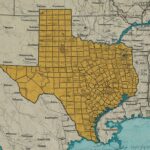In the intricate world of telecommunication, area codes act as geographic identifiers for phone numbers. These three-digit prefixes play a crucial role in routing calls and ensuring efficient communication. The 366 area code stands out as a unique case within the North American Numbering Plan (NANP), holding a place for a potential future yet unseen. This article explores the intriguing story behind the 366 area code, examining its current status, potential future applications, and the ever-evolving landscape of phone number allocation.

Understanding the North American Numbering Plan (NANP)
The North American Numbering Plan (NANP) governs the allocation of telephone numbers across the United States, Canada, and parts of the Caribbean and Atlantic islands. This system assigns specific area codes to designated geographic areas. For instance, the 212 area code identifies phone numbers in New York City, and the 310 area code covers parts of Los Angeles.
The NANP ensures a structured and organized approach to phone number allocation, preventing confusion and facilitating efficient call routing.
The Reserved Status of the 366 Area Code: A Code in Waiting
The 366 area code currently holds a distinct position within the NANP. Unlike most area codes assigned to specific geographic locations, 366 remains unassigned. This means you won’t encounter a phone number with a 366 prefix currently in operation.
However, the story doesn’t end there. The 366 area code has been designated as a reserved code. This signifies its potential future use as a new area code within the NANP to accommodate the growing demand for phone numbers in North America.
Here are some possible reasons for reserving the 366 area code:
Anticipating Growth: The NANP might be reserving the 366 area code for future use, anticipating a potential increase in demand for new phone numbers in the coming years due to population growth and technological advancements.
Strategic Planning: Assigning new area codes can be a complex process. Having a reserve code like 366 allows for flexibility and avoids potential disruptions if the need for additional codes arises unexpectedly.
Geographic Expansion: While a specific geographic location hasn’t been designated for the 366 area code yet, it could potentially be assigned to a region experiencing a surge in population or economic activity, leading to a higher demand for phone numbers.
The exact rationale behind reserving the 366 area code remains within the purview of the NANP administrators.
The Evolving Landscape of Phone Number Allocation
The way we communicate is constantly changing, and phone number allocation needs to adapt accordingly. Here’s a glimpse into some of the factors influencing the potential need for the 366 area code and the future of phone numbers:
Mobile Phone Proliferation: The widespread use of mobile phones has significantly increased the demand for phone numbers compared to the landline era.
Internet-Based Communication: Platforms like VoIP (Voice over Internet Protocol) offer alternative calling options that sometimes utilize phone numbers, potentially impacting traditional phone number allocation needs.
Technological Advancements: New technologies like machine-to-machine communication (M2M) and the Internet of Things (IoT) might introduce new demands for unique phone number identifiers.
These factors combined highlight the dynamic nature of phone number allocation and the potential role the reserved 366 area code might play in the future.
Alternatives to New Area Codes: Exploring Existing Solutions
While the 366 area code signifies a potential approach to address future phone number demands, it’s crucial to consider existing solutions and alternative strategies:
Mobile Number Portability: This allows users to retain their phone number when switching mobile service providers, potentially reducing the overall need for new phone numbers.
More Efficient Use of Existing Codes: The NANP might implement strategies to optimize the utilization of existing area codes, maximizing the number of available phone numbers within those codes.
Technological Innovation: Advancements in telecommunication technology might lead to alternative solutions for managing phone numbers, potentially reducing reliance on traditional area codes.
The decision to deploy the 366 area code will depend on a careful evaluation of these factors and the overall effectiveness of existing strategies.


